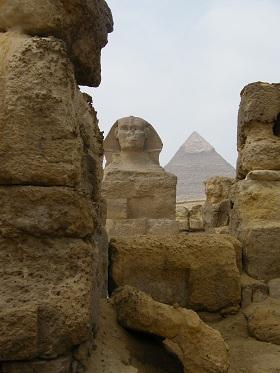Using AI to control energy for indoor agriculture
30 September 2024
Published online 20 September 2012
Researchers document periods of drought across the Middle East from fossil pollen and charcoal from the Nile delta in Egypt.

By peeling back the layers of sediment buried beneath the Nile delta region in Egypt, researchers have traced the history of droughts in the region, including a mega-drought 4,200 years ago that might have led to the demise of the Old Kingdom of ancient Egypt.
Jean Daniel Stanley, an oceanographer from the Smithsonian Institution in Washington DC, collected over 70 sediment cores from the Nile delta during the 1980s and 1990s that date from 7,000 years ago. "We subsampled [the cores] for pollen and microscopic charcoal and radiocarbon remains," says Stanley.
The researchers then analyzed the ancient pollen and charcoal remains buried in these samples. Pollen was expected to reflect droughts, while charcoal would be a metric of fires, which are more frequent during periods of drought.
"Research from records, such as sediment and isotopes, shows that there were major changes in precipitation and hydrology during the Holocene [epoch]," says Christopher Bernhardt, a geologist with the US Geological Survey based in Philadelphia, and lead author of the paper. "We were curious if these changes in precipitation over the Nile affected vegetation in the delta."
Climatic changes that decrease rainfall over the Ethiopian plateau have regularly decreased the strength of the Nile. "These low-flow events are recorded herein by changes in Nile delta pollen assemblages. This variability in the pollen record is expressed primarily as a decrease in pollen and an increase in microscopic charcoal," explains Bernhardt.
Three of the four periods of low pollens coincided with archaeologically and historically recorded droughts. The earliest, which happened 5,000 years ago, may have led to the unification of Upper and Lower Egypt and the fall of the Uruk Kingdom in modern day Iraq, propose the authors. The abrupt mega-drought 4,200 years could have possibly led to the collapse of Egypt's Old Kingdom. "The vegetation response lasted much longer compared with other geologic proxy records of this drought, possibly indicating a sustained effect on delta and Nile basin vegetation," said Bernhardt.
The third one, which occurred 3,000 years ago, affected the eastern Mediterranean and is linked to famines in the Syrian and Babylonian Kingdoms. "Historians have recorded that there was a huge drought during this era, but this scientific study add more credibility to the historical narratives," says Wahid Moufaddal, a marine scientist at the National Institute of Oceanography and Fisheries in Alexandria, Egypt. "While the researchers did not use a new technique, it is interesting in that it verifies the history and gives more accurate dates for the droughts."
In 2002, researchers at the University of Amsterdam conducted a similar research in southern Mexico. They found a sudden decrease in pollen, suggesting a rapid drying of the climate, coincides with the fall of the Maya.
"We have to study the past in order to plan for the future," says Stanley. "With such studies scientists can predict the effects a similar drought in the future would have.
doi:10.1038/nmiddleeast.2012.137
Stay connected: